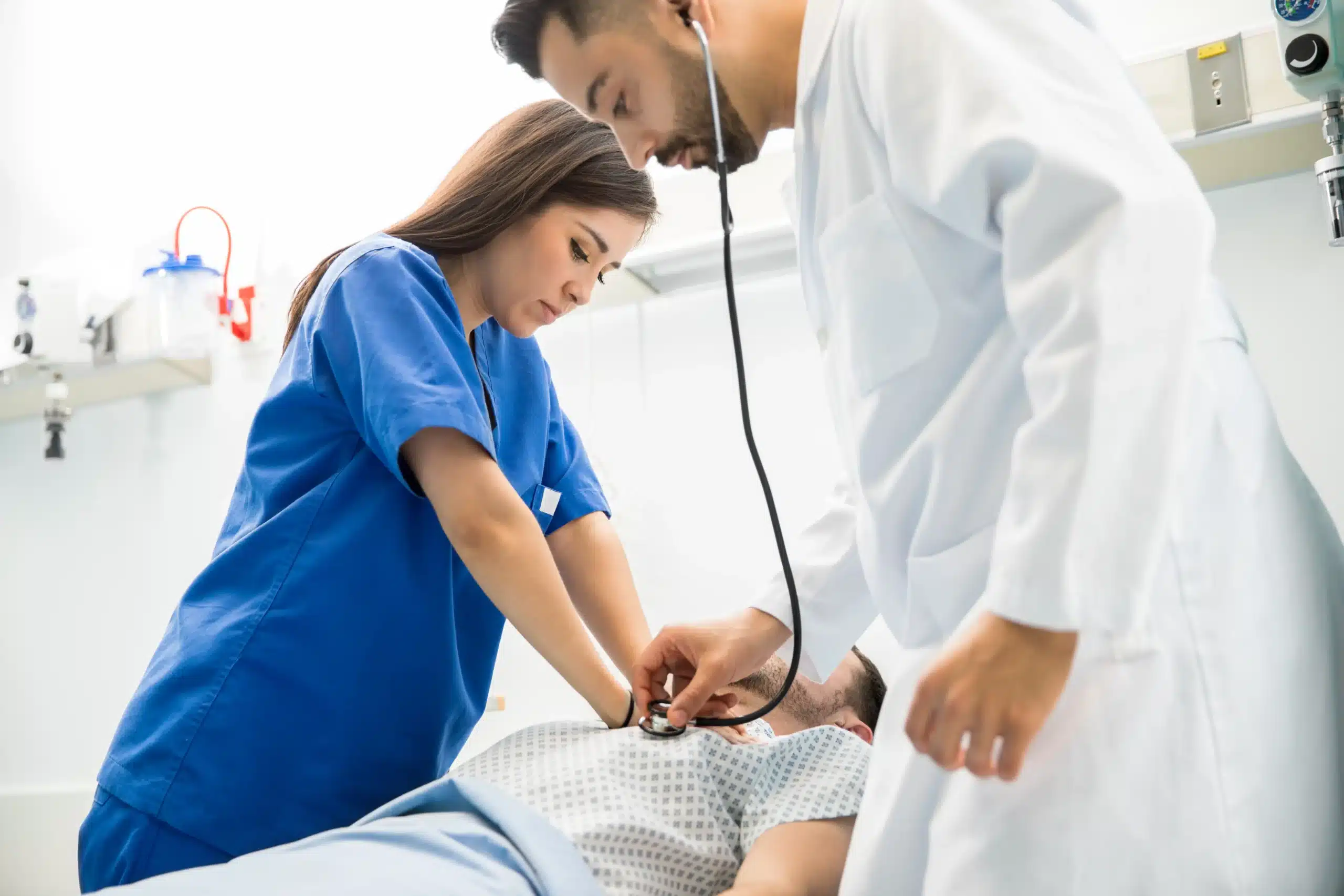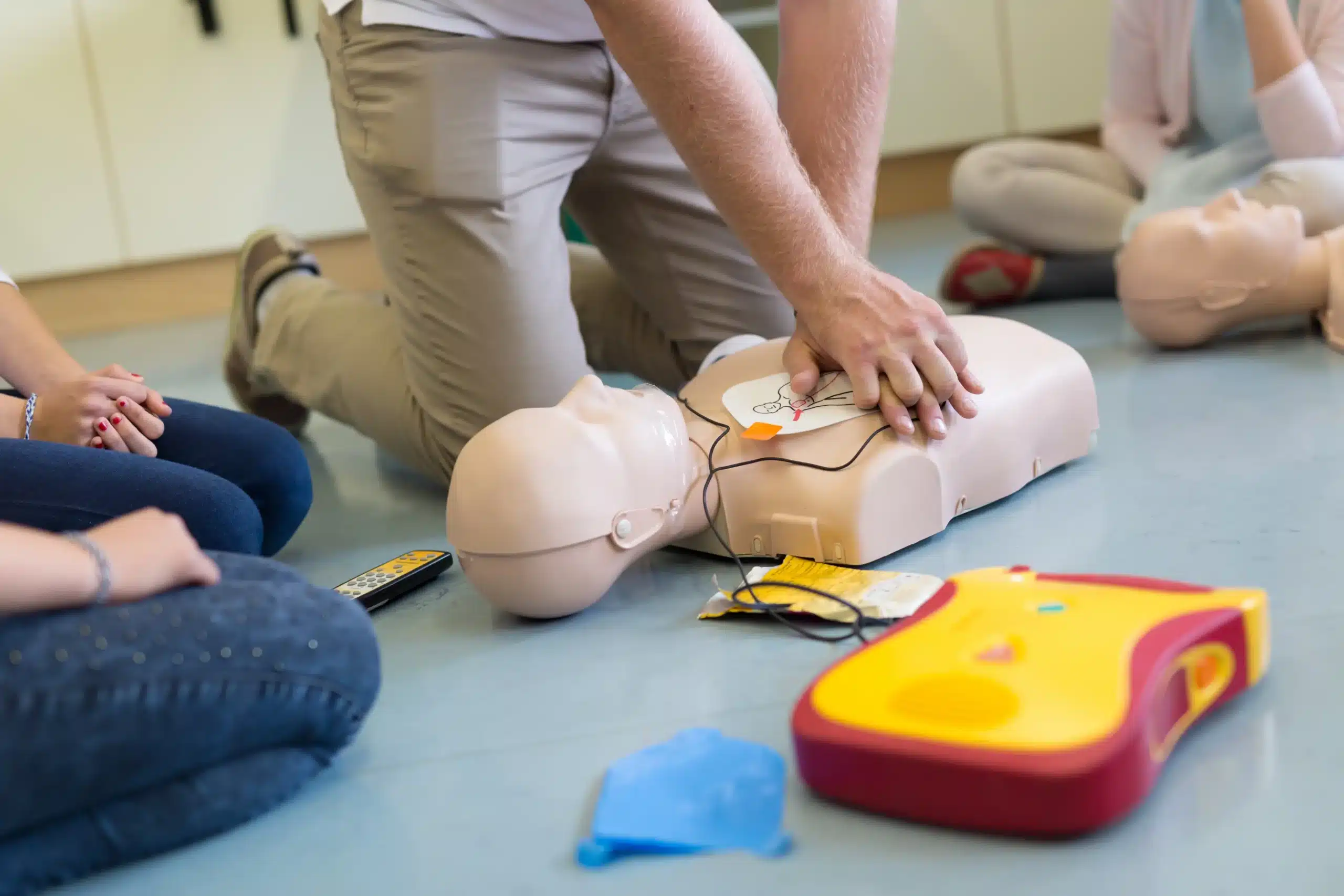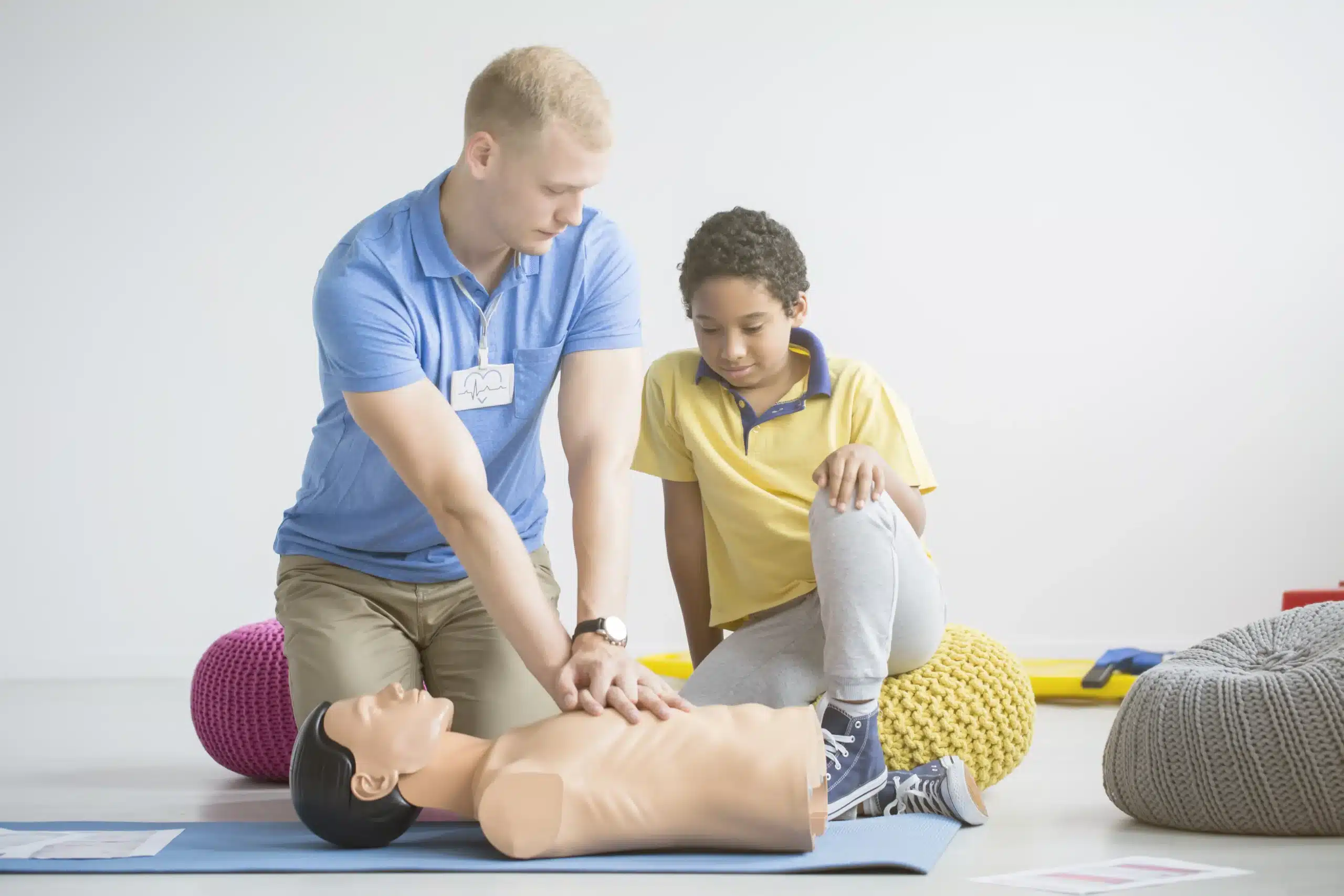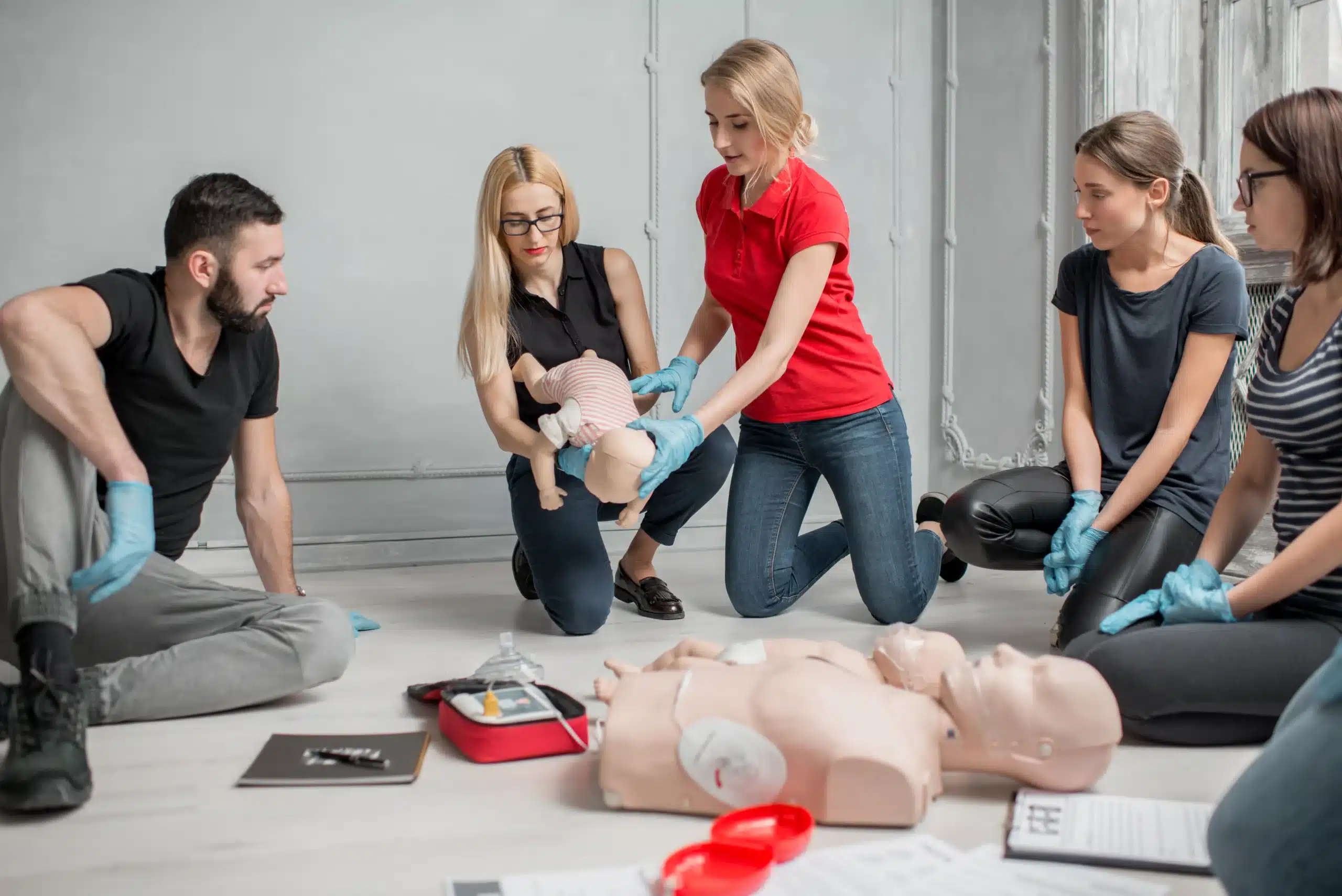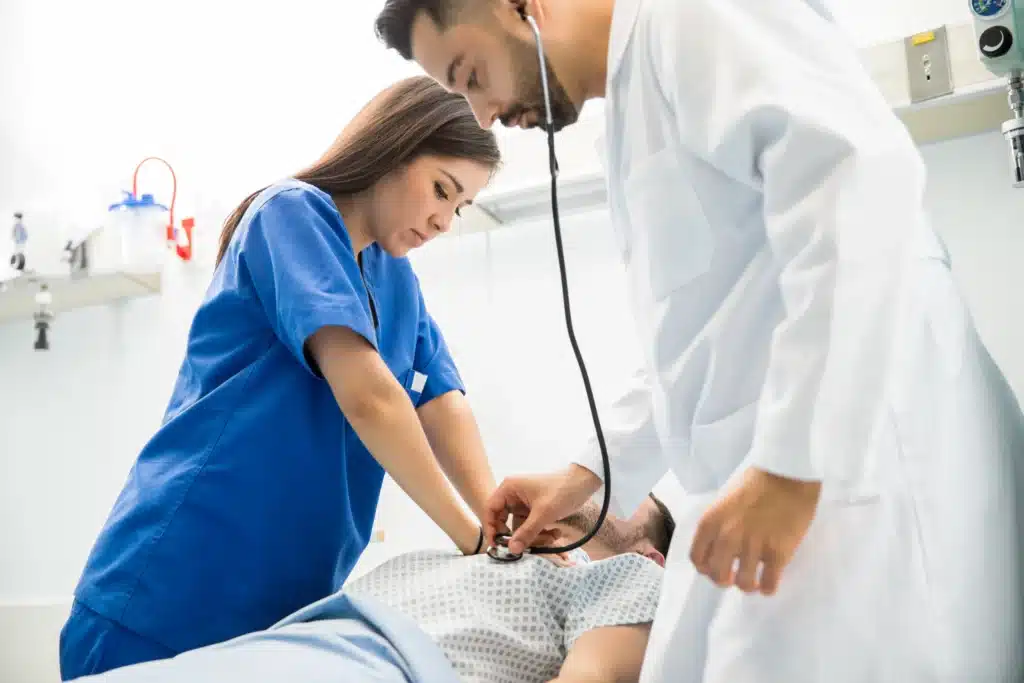Empowering yourself with life-saving skills is one of the most valuable things you can do. BLS certification provides the knowledge and training to respond effectively to medical emergencies, giving you the confidence to act when it matters most. This article serves as your complete guide to BLS certification in San Pablo. We’ll delve into the core components of BLS training, discuss the benefits of certification, and outline the steps to get certified. Whether you’re a healthcare professional, a concerned parent, or simply someone who wants to make a difference, this guide will help you on your path to becoming BLS certified.
Key Takeaways
- BLS certification empowers you to save lives: It provides the essential skills to respond to medical emergencies, including CPR, AED use, and choking relief, applicable in various professional and personal settings.
- Find the right BLS course in San Pablo: Safety Training Seminars offers convenient and affordable AHA-certified courses, catering to diverse schedules and learning preferences with options for online and in-person training.
- Stay certified and prepared: Maintain your BLS skills and knowledge by renewing your certification every two years and pursuing continuing education opportunities to ensure you’re always ready to respond effectively.
What is BLS Certification?
BLS, or Basic Life Support, is a crucial certification that gives you the skills to respond to medical emergencies. It’s the foundation for saving lives, providing the essential tools to help adults, children, and infants in critical situations. A BLS certification.
Key BLS Training Components
BLS certification courses cover a range of life-saving techniques. You’ll learn how to quickly recognize life-threatening emergencies, including cardiac arrest, respiratory distress, and choking. The training emphasizes high-quality chest compressions and proper ventilation techniques, ensuring effective blood circulation and oxygen delivery. BLS courses also cover the early use of an automated external defibrillator (AED), a device that can restore a normal heart rhythm. These skills are practiced through realistic scenarios and simulations, building your confidence and competence in responding to diverse emergency situations. For more information, the American Heart Association offers details on their BLS training.
Why BLS Matters in Healthcare
In healthcare settings, BLS is paramount. Immediately administering high-quality BLS after a medical emergency significantly improves patient outcomes. It’s the first link in the chain of survival, increasing the chances of recovery and minimizing the risk of long-term complications. For healthcare professionals, BLS certification is often a prerequisite, demonstrating a commitment to patient safety and high-quality care. Regular BLS training and recertification ensure that healthcare providers stay up-to-date with the latest guidelines and maintain their skills. The American Heart Association offers guidance on BLS training for healthcare providers, emphasizing its importance in delivering effective patient care.
Find BLS Certification in San Pablo
Finding the right BLS certification course can feel overwhelming, but it doesn’t have to be. Here’s a breakdown of reputable providers and options in San Pablo to help you get started.
Safety Training Seminars: Your Go-To Option
Safety Training Seminars is a woman-owned AHA Training Center offering high-quality American Heart Association BLS, ACLS, PALS, CPR, and First Aid courses right here in San Pablo. Their convenient location serves Richmond, Berkeley, and Oakland, too. Check their website for their low price guarantee and course schedule. You can find their course calendar and register for a class that fits your schedule.
American Heart Association Courses
The American Heart Association (AHA) sets the standard for BLS training. AHA-certified courses equip you with the skills to respond to cardiac arrest and other life-threatening emergencies. Safety Training Seminars is an authorized provider, ensuring you receive excellent instruction and a certification card valid for two years.
Red Cross Courses
The American Red Cross also offers BLS certification. Their online BLS course offers flexibility, allowing you to learn at your own pace with interactive modules. Remember that online-only courses usually require an in-person skills session for full certification.
Other Local Providers
Several other providers offer BLS certification around San Pablo. In Home CPR is one local company offering BLS training. When comparing providers, confirm they offer AHA-compliant BLS certification, often required for healthcare professionals and students. A quick search for “BLS certification near me” can also reveal additional options. Compare pricing, schedules, and course content to find the best fit.
BLS Course Content & Skills
BLS certification equips you with the essential skills to respond to life-threatening emergencies. It’s a comprehensive program covering everything from recognizing emergencies to providing immediate care. Let’s break down the core components you’ll master during your BLS training.
CPR, AED Use, and Choking Response
This section of the course focuses on the fundamentals of cardiopulmonary resuscitation (CPR). You’ll learn how to perform high-quality chest compressions and deliver appropriate ventilations, the cornerstones of effective CPR. Beyond CPR, the course covers how to use an automated external defibrillator (AED). AEDs are life-saving devices that can restore a normal heart rhythm during sudden cardiac arrest. You’ll gain the confidence to quickly assess a situation and use an AED correctly. The BLS course also addresses choking emergencies. You’ll learn techniques to relieve choking in both adults and children, providing crucial assistance when every second counts. These skills, as highlighted by the American Heart Association, are vital for any healthcare provider. BLS training also emphasizes the importance of early recognition and response to ensure the best possible patient outcomes, as discussed in this overview of BLS for Healthcare Providers.
First Aid Basics and Advanced Equipment Practice
While the core of BLS revolves around CPR, AED use, and choking response, many courses also incorporate fundamental first aid principles. You’ll learn how to manage common injuries like bleeding, burns, and fractures. This knowledge allows you to provide immediate care and stabilize a patient until professional medical help arrives. Some BLS courses also offer hands-on practice with advanced equipment like bag-valve masks, which deliver oxygen to patients who are not breathing adequately. This practical experience is invaluable, especially for healthcare professionals working in emergency settings. Regular refresher courses are essential to keep these skills sharp, ensuring you’re always prepared to respond effectively. This comprehensive approach ensures you’re well-rounded and ready to handle a variety of medical emergencies. The value of ongoing BLS training is further reinforced by resources like this article on the importance of BLS training, which highlights its alignment with leading regulatory bodies.
Get BLS Certified: The Process
Getting your BLS certification is straightforward and designed to fit your schedule. Here’s what you can expect:
Online Learning
Many courses offer a blended learning approach, combining online theory with in-person skills practice. This flexible format lets you learn the essentials of CPR, AED use, and other life-saving techniques at your own pace through online modules. You’ll cover topics like recognizing life-threatening emergencies, performing high-quality CPR, and understanding the chain of survival. This online portion prepares you for the hands-on practice to come. Safety Training Seminars offers this blended learning format for BLS certification.
In-Person Skills Assessment
After completing the online coursework, you’ll schedule a practical skills assessment. This session focuses on demonstrating your proficiency in the techniques you learned online. The in-person skills test uses a voice-assisted manikin, providing real-time feedback as you practice. While an instructor isn’t with you during the test itself, support is available by phone if needed. This approach allows for focused, individualized practice and ensures you’re prepared to respond to real-world emergencies. You can find available skills sessions in San Pablo that work for you.
Certification Validity and Recognition
After successfully completing both the online component and the in-person skills assessment, you’ll receive your BLS certification, valid nationwide for two years. The American Heart Association certification is widely recognized in the healthcare field, demonstrating your commitment to providing high-quality patient care. Remember, maintaining your skills is crucial, so renew your certification before it expires to stay current with the latest guidelines.
BLS Certification: Cost & Value
Getting BLS certified is an investment in your skills and career. Let’s break down the costs associated with BLS certification in San Pablo and explore the significant value it brings.
Pricing and Payment Options
One of the first questions you likely have is, “How much does BLS certification cost?” Safety Training Seminars offers the BLS course for $120, covering online learning, hands-on practice, and your AHA certification card. This is a competitive price, especially in Northern California. While some training providers don’t list prices upfront, contacting them directly for a quote is always recommended. Knowing exactly what’s included—like study materials or online resources—helps you make an informed decision. You can contact Safety Training Seminars for more information.
Career Benefits and Professional Growth
BLS certification isn’t just a checkbox on a job application; it’s a valuable asset that can open doors to numerous career opportunities. In many healthcare settings, BLS certification is a requirement. Whether you’re a medical student, nurse, or other healthcare provider, this certification demonstrates your commitment to patient safety and high-quality care. It can be a key differentiator when applying for jobs and can even lead to higher-paying positions. Beyond healthcare, BLS certification is recognized across various fields, from education and childcare to fitness and other professions where knowing how to respond to emergencies is essential. It’s an investment that can significantly enhance your professional development and broaden your career options.
Find a BLS Class Time That Works for You
Convenient Training Locations & Daily Classes
Finding the right BLS class time shouldn’t be a struggle. In San Pablo, we offer classes almost daily, between 7 am and 6 pm. This flexibility is designed to accommodate busy schedules, whether you’re a working professional, a student, or juggling various commitments. Our training sessions are held at 2090 23rd Street, Room 8, San Pablo, CA 94806—a central location easily accessible to residents of San Pablo and surrounding areas like Richmond, Berkeley, and Oakland. You can view our course calendar and register for CPR and first-aid classes in San Pablo. For those seeking other options, you can also find local providers offering American Heart Association BLS certification courses daily. This ensures you can quickly find a class that fits your availability. To secure your spot, simply contact us at (510) 340-4490.
Online vs. In-Person BLS: Which is Right for You?
Choosing between online and in-person BLS training depends on your learning style, schedule, and physical capabilities. Both options provide the knowledge and skills you need to respond to emergencies, but they differ in their delivery and approach. Let’s break down what each format entails to help you decide which path suits you best.
Content Delivery
Most BLS certification courses now use a blended learning approach, combining online instruction with an in-person skills assessment. This means you’ll complete the cognitive portion of the course online, at your own pace, before scheduling a short in-person session to demonstrate your skills.
For Basic Life Support (BLS), the online portion typically takes 1–2 hours. More advanced courses, like Advanced Cardiovascular Life Support (ACLS) and Pediatric Advanced Life Support (PALS), might require 3–4 hours of online coursework. The online component is designed to be accessible on any device—computer, tablet, or smartphone—and often includes interactive modules and videos. This adaptive learning format allows you to focus on areas where you need more practice and breeze through sections you’ve already mastered.
Pros and Cons of Each Format
In-person training offers the immediate feedback and hands-on practice that many healthcare providers appreciate. You’ll have the opportunity to ask questions in real-time, work through scenarios with instructors, and practice your skills on mannequins. This hands-on experience can build confidence and prepare you for real-world emergencies. A BLS renewal class is also a great way to refresh your knowledge and stay up-to-date on the latest guidelines.
However, in-person training requires setting aside more time, as you’ll need to attend a scheduled class. The physical demands of CPR training, such as chest compressions and rescue breaths, might also be challenging for some individuals. If you have physical limitations, discuss them with your chosen training provider before signing up for an in-person class.
Online training offers unparalleled flexibility. You can complete the coursework whenever and wherever it’s convenient, fitting it around your busy schedule. This format is especially helpful for those juggling work, family, or other commitments. The online portion still includes an in-person skills session, ensuring you receive the hands-on training necessary for certification.
While online learning offers convenience, it requires self-discipline and motivation. You’ll need to be proactive in scheduling your in-person skills assessment and ensure you have a reliable internet connection to access the online materials. The best format for you depends on your individual needs and preferences. Consider your learning style, available time, and physical abilities when making your decision. If you’re still unsure, contact Safety Training Seminars for personalized guidance.
Who Needs BLS Certification?
BLS certification empowers you with the skills to respond effectively to medical emergencies. While some professions require it, many others benefit from having this life-saving knowledge. Let’s explore who needs
Healthcare Professionals & Support Staff
BLS certification is often a prerequisite for many healthcare roles. From doctors and nurses to medical assistants and technicians, these fundamental life-saving skills are essential for safe and effective patient care. Many healthcare institutions mandate BLS certification for their employees, ensuring a baseline competency in responding to emergencies. This protects patients and creates a safer work environment. BLS training covers core skills like CPR, AED use, and choking relief.
Educators and Childcare Providers
Working with children comes with a responsibility for their safety. For educators and childcare providers, BLS certification is crucial. It empowers them to respond quickly and confidently to medical emergencies that might occur in the classroom or daycare. BLS classes in San Pablo offer the required CPR certification for these professionals, covering techniques specific to pediatric emergencies. This preparedness can significantly impact a child’s outcome during a medical crisis.
Other Professionals Who Benefit from BLS
BLS certification is valuable beyond healthcare and childcare. While not always a formal requirement, these skills can be invaluable in various situations. Consider professionals like social workers, security guards, fitness instructors, or those in the hospitality industry. BLS training provides a sense of preparedness and confidence, enabling effective responses to emergencies, even outside traditional healthcare settings. For parents, grandparents, or anyone who wants to be prepared, BLS certification offers valuable, potentially life-saving skills.
Maintain Your BLS Certification
Keeping your BLS certification current is essential for providing effective, high-quality care. This section covers everything you need to know about renewing your BLS certification and staying up-to-date with the latest life-saving techniques.
Renewal Process & Requirements
BLS certification is typically valid for two years. To maintain your credentials and ensure you’re practicing with the most current guidelines, you’ll need to renew your certification before it expires. The American Heart Association offers more information on their specific renewal requirements. Generally, renewal involves completing a refresher course that covers the latest updates to BLS procedures. This ensures your skills are sharp and aligned with current best practices. Safety Training Seminars offers convenient renewal courses to help you stay certified. Check our course calendar for upcoming classes in San Pablo, Richmond, Berkeley, and Oakland, CA.
Continuing Education
Beyond the required renewal process, continuing education in BLS is crucial for healthcare professionals. Regularly reviewing and practicing BLS skills helps maintain proficiency and build confidence in responding to emergencies. Look for opportunities to expand your knowledge and skills through workshops, online resources, and in-person training sessions. Staying informed about advancements in resuscitation techniques ensures you’re prepared to deliver the best possible care. Consider exploring additional certifications, such as ACLS or PALS, to further enhance your expertise and career opportunities. Contact us to learn more about our advanced courses and how they can benefit your professional development.
Prepare for BLS Certification
Getting ready for your BLS certification involves familiarizing yourself with the core concepts and practicing the necessary skills. This prep work will boost your confidence and set you up for success on the skills test.
Study Resources and Practice Materials
The American Heart Association (AHA) provides comprehensive resources for BLS certification. Our San Pablo CPR classes use these resources, covering essential skills like adult, child, and infant CPR, AED use, and other critical emergency procedures. These classes give you the hands-on training and knowledge you need to respond effectively in real-life situations. You’ll also complete an online portion (RQI) before your in-person skills test. This online component usually takes 1–2 hours and provides a solid foundation for the practical training.
Tips for Success
Here are a few tips to help you ace your BLS certification:
- Review the videos: Take advantage of the online review videos included in your course materials. They’re a fantastic way to reinforce your learning and can significantly improve your understanding of the material.
- Practice makes perfect: CPR is a physical skill. Regular practice will build your stamina and confidence, ensuring you’re ready for the skills test. Consider practicing on a CPR manikin if you have access to one. Register for a class to learn these skills and get certified.
- Choose the right course: We offer different BLS course levels to meet varying needs and experience levels. Contact us to discuss which course is the best fit for you, whether you’re a beginner or have prior experience. Choosing the right course will ensure you receive the most relevant and effective training.
Related Articles
- BLS Certification Near Me: Your Complete Guide – San Pablo CPR Classes
- BLS Renewal Near Me: Top Local Providers – San Pablo CPR Classes
- Basic Life Support in Richmond: A Practical Guide – San Pablo CPR Classes
- BLS Classes Near Me: Everything You Need to Know – San Pablo CPR Classes
- BLS for Healthcare Providers in Berkeley: A Complete Guide – San Pablo CPR Classes
Frequently Asked Questions
What does BLS cover?
BLS training equips you with the skills to perform CPR, use an AED, and relieve choking. It also often includes basic first aid principles and, in some cases, practice with advanced equipment like bag-valve masks. The goal is to provide immediate care and stabilize a patient until professional medical help arrives.
How long does it take to get BLS certified?
The time commitment varies depending on the course format and provider. Blended learning courses, combining online learning and in-person skills sessions, often require 1-2 hours of online coursework followed by a shorter in-person skills assessment.
How much does BLS certification cost in San Pablo?
Safety Training Seminars offers BLS certification for $120, a competitive rate in the area. This price typically includes the online learning materials, in-person skills assessment, and your official AHA certification card. Other providers may have different pricing structures, so it’s always best to inquire directly.
Where can I find BLS classes near me?
Safety Training Seminars offers BLS classes in San Pablo, serving the surrounding areas of Richmond, Berkeley, and Oakland. They offer a convenient location and flexible scheduling, with classes running almost daily. You can find their course calendar and registration information on their website. Searching online for “BLS certification near me” can also help you locate other training providers in your area.
How long is BLS certification valid, and how do I renew it?
BLS certification is typically valid for two years. Renewal involves completing a refresher course that covers any updates to BLS guidelines and procedures. This ensures your skills remain current and aligned with best practices. Contact your certifying organization or training provider for specific renewal requirements and available courses.
